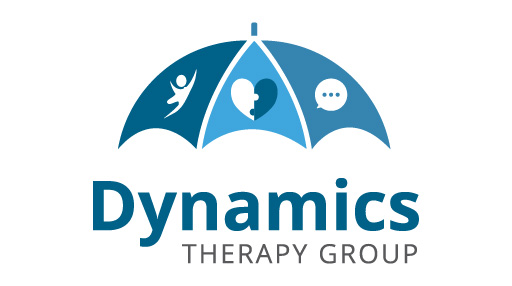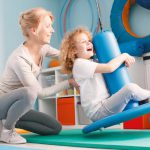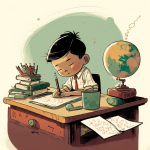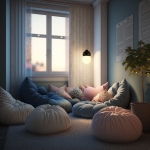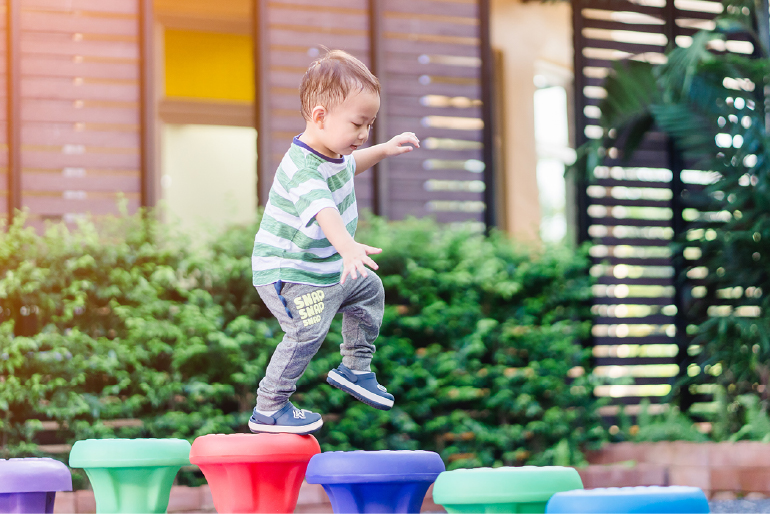
Balance development is a pivotal part of child development. Gross motor coordination, balance and motor planning are all part of the processes of acquiring these skills. Here, we cover balance development, strategies to support this skill, and specific balance activities.
Why are balance and coordination important?
Age appropriate balance and coordination allows the child to be involved in the sports participation with a reasonable degree of success as it aids fluid body movement for physical skill performance (e.g. walking a balance beam or playing football). The involvement in sport is helpful in maintaining self regulation for daily tasks as well as developing a social network and achieving a sense of belonging in a community or social setting. It also helps children develop and maintain appropriate controlled body movement during task performance which, when effective, limits the energy required thus minimising fatigue.
With good balance and coordination there is less likelihood of injury as the child is likely to have appropriate postural responses when needed (e.g. putting hands out to protect themselves when they fall of their bike). The physical attributes of balance and coordination also allow appropriate posture for table top tasks and subsequent success at fine motor tasks.
During the elementary school years, motor development continues to focus on the refining of previously acquired skills. With this refinement, hours of repetition of activities to attain a mastery of common interests are observed. Children ride bicycles, scale fences, swim, skate, and jump rope (Knobloch & Pasaminick, 1974; Stone & Church, 1973. Although motor capabilities are highly varied for this age group, balance and coordination improve throughout the middle childhood years, providing children with the agility to dance and play sports with proficiency. Research indicates that children who master physical skills tend to exhibit high self-esteem (Short-DeGraff, 1988). Not only does self esteem improve as children master physical skills, but peer acceptance improves as well.
What is Balance?
Before officially diving into the development of balance, we first need to define and understand it.
- Balance – According to the Harvard Medical School, balance is the ability to distribute your weight in a way that lets you stand or move without falling, or recover if you trip. Good balance requires the coordination of several parts of the body: the central nervous system, inner ear, eyes, muscles, bones, and joints
- Static Balance – maintaining body position during an unmoving task, such as sitting or standing
- Dynamic Balance – the ability to remain standing and stable while performing movements or actions that require displacing or moving oneself
The various muscles of the body contract or relax in order to maintain the proper balance for our daily activities, as controlled by our balance center in the brain; the cerebellum.
In addition to the cerebellum, the inner ear also sends signals to the brain, to give a status report on the environmental changes that affect balance. The inner ear is where the vestibular system is located.
Its fluid picks up on the motion and position of the head, constantly sending information back to the brain via the eighth cranial nerve. When there is a medical issue within the ear, such as an ear infection or torticollis, it may affect balance. This is generally in the form of dizziness or unsteadiness.
Balance is needed to stand at the mirror while brushing teeth, get out of the car, and put on socks, to name just a few. Without the development of this balance skill, support aids (walkers, crutches, braces) may be necessary for safety and function.
Correct body awareness makes it easier to have a comfortable seated posture. Good balance also makes activities such as sitting still while moving the head to look up at the chalkboard, and then back down to write easier.
How can I tell if my child has problems with balance and coordination?
If a child has difficulties with balance and coordination they might:
- Fall easily, trip often or can’t ‘recover’ quickly from being off balance.
- Move stiffly and lack fluid body movement (e.g. run like a ‘robot’).
- Avoid physical activity (e.g. playground use, sports participation).
- Be late to reach developmental milestones (e.g. crawling and walking).
- Be slower than their peers to master physical skills (e.g. bike riding, swimming or tree climbing).
- Be less skillful than their peers in refined sports participation (e.g. team sports).
- Push harder, move faster or invade the personal space of others more than they intend to.
- Be fearful of new physical games (e.g. swings) or scared of heights
- Have difficulty getting dressed standing up (e.g. they need to sit down to put on pants as they lose their balance standing on one leg)
- Have trouble navigating some environments (e.g. steps, curbs, uneven ground).
- Tire more quickly than their peers or need to take regular short rest periods during physical activity.
What can be done to help improve balance and coordination skills?
- Improve attention to task and alertness levels to support a rapid response when they lose their balance.
- Explicit teaching of mechanics: Correct alignment of the body in order to maintain balance (e.g. aiming at and facing the body towards the target when throwing).
- Strengthen the ‘core’ namely the central muscles of the body to provide greater body (especially trunk) stability.
- Simplify tasks to concentrate on only one movement at a time, until the child is ready to integrate several at once.
- Improve muscle strength to allow for better muscle control for speed and direction of movement.
- Improve muscular endurance to increase the length of time with which the child can maintain balance and coordination.
- Improve sensory processing to ensure the body is receiving and interpreting the correct messages from the muscles in terms of their position, their relationship to each other, the speed at which they move and how much force they are using.
- Social motivators: If a child has a friend or family member involved in a sport, they may be more persistent in participating and practicing those specific skills.
Gross motor coordination home exercise program
At-home exercise programs are important to engage the family in their child’s therapy program. At-home gross motor coordination activities provide the family with some easy and fun ways to work as a family while developing important skills.
A daily routine is most effective, however, the family can work on a weekly routine if that is all the time they have (every little bit counts).
Hopefully, when the family sees the difficulties their child has in doing some of these gross motor coordination activities, and understand the impact it has on their academic learning and overall school success, they will invest more time into their program.
- Follow the Leader: Think about sprinkling in some old movements with new ones to help the child feel successful, but also encourage them to participate in the harder or more difficult movements. Ideas include: clapping, marching, arm circles, twirling, side to side jumping, crawling, sidekicks, hopping, stair climbing with hands and feet, and body swaying.
- Obstacle course – Think about keeping it simple at first with just 2-3 obstacles and then add additional obstacles as they improve their skills. Ideas include: jumping over pillows, walking around multiple chairs or bar stools, crepe paper laser maze in the hallway or between chairs, tunnels created with tables and chairs, or even pool noodles in the hallway.
- Dance moves – Find YouTube dance move videos for the child to engage in ,or just try silly dances such as animal dancing, freeze dancing, and animal sound dancing.
- Jump rope or hoola hoop moves – Try jump roping by either continuously moving the rope overhead and jumping, or if this is not possible, try flipping rope overhead, pause behind feet, and step over in a continuous manner. If the child is not ready for jumping rope, try wiggling the rope on the ground like a snake while the child jumps over it. If jump roping is not an option, try the same idea with use of a hoola hoop.
- Ball dribbling – Use a playground or basketball to do some ball dribbling using one hand at a time and then advance to bilateral hand dribbling from left to right and right to left. You can even have them dribble with the ball by bouncing off the wall to the floor or ground.
- Target toss – You can use a variety of objects for this activity such as stuffed animals, bean bags, pillows, or balls. Toss them into a basket, try cornhole, toss into tape shapes on the floor, or even at a target on the wall.
- Rolling – Have the child roll themselves down a hill or an incline created with a wedge or other surface. Don’t have an incline? That’s okay, roll up in a blanket or a flat sheet.
- Twister or Twister Moves – These two games are two of the best games for older kids to play in order to work on gross motor coordination! Kids really love them and so do the families.
- Climbing – Have the child climb up a rope ladder, stairs, or the ladder on a bunk bed. Create a coordination exercise with obstacles on the floor to crawl over such as pillows or cushions off of the sofa.
- Simon Says – This simple game can be a fun way to work on coordination skills. You can incorporate the use of left and right directionality to make it more of challenge.
- Tight rope balance beam – Place a jump rope or a strip of masking/painter’s tape on the floor to have the child walk on the line in order to remain on the tightrope – be careful and don’t fall off! Incorporate heel to toe, side stepping, squatting to pick up items, and walking backwards. A slack line across a canyon will be the ultimate goal. These indoor balance beam ideas will keep you covered for indoor activities and these outdoor balance beam ideas are great for outdoor play.
- Hopscotch – Draw a hopscotch board on the driveway or the sidewalk and play this classic game. You can even do it even on a rainy day by using tape on the floor in the home.
- Hippity Hop Balls and Pogo Jumpers – Many families have one of these at home, and they are great to work on overall gross motor coordination. Hop around the house or create a path to have the child hop on.
- Pillow jumping – Create a path around the room with pillows or stuffed animals on the floor and have the child jump over them with two feet or if they are ready for an advanced move, on one foot. If you are in someone else’s home, make sure the parents are okay with their child jumping on pillows or furniture first.
- Big shoe walking – Allow the child to walk around the house in shoes that are too large for them. Have them try slippers, boots, sneakers, and sandals. It’s super fun and highly motivating. While it’s not the safest option, children love walking around in high heels.
- Crawling – Simply crawl on all fours to maneuver around the room by crawling around, over, or under furniture. It can be the fun way to work on coordination exercise.
- Ball rolling on a tape maze – Create a maze on the floor and have the child work on rolling a ball on top of maze lines, either by using their hands and crawling or standing and using their feet.
- Ball rolling on a wall – Have the child work on rolling a ball up and down the wall with their feet, while lying supine, or roll the ball on a tape maze using their hands. Create the maze in either a horizontal or vertical fashion.
A final note on gross motor coordination
While all of these gross motor coordination activity ideas are great, don’t forget there are other ways to have the child build their skills. They can engage in community activities such as karate, gymnastics, swimming, dance, yoga, ballet or organized sports. They can also participate activities in outdoor activities (e.g. playground) with peers. While your child says they would rather sit in front of their electronics, these gross motor coordination activities can be just as fun.
Occupational Therapy aims to maximise a child’s participation in a wide variety of everyday activities, ranging from home, school and play. Since balance and coordination skills are often incorporated in almost everything we do, you may consider seeking for professional help with an occupational therapist should your child face any balance and coordination difficulties.
References
1. Case-Smith, 2005. Occupational Therapy for Children (5th ed.). Elsevier Mosby.
2. https://www.theottoolbox.com/gross-motor-coordination-activities/

